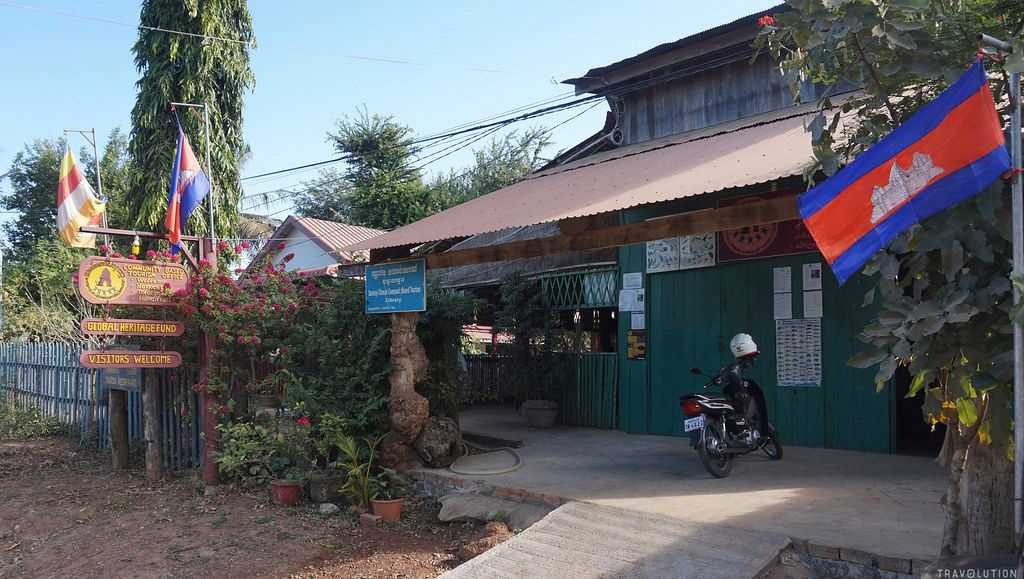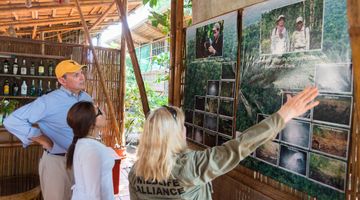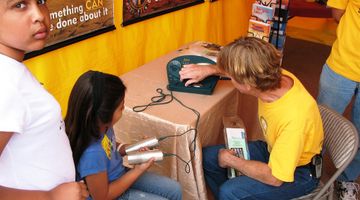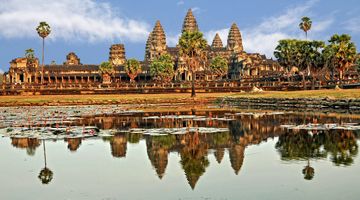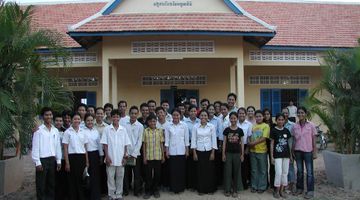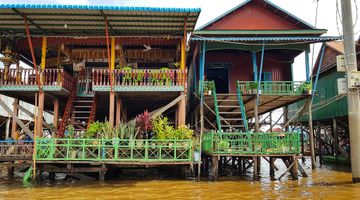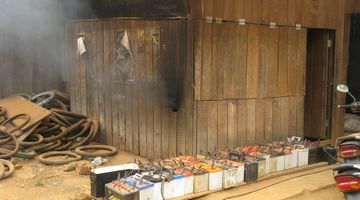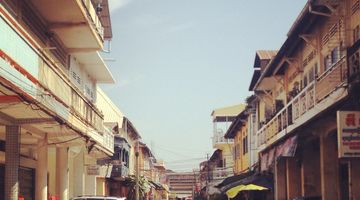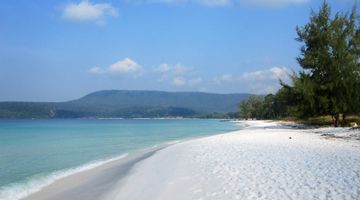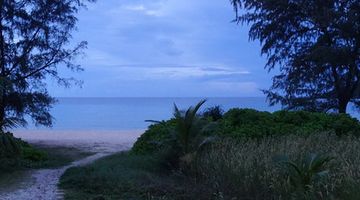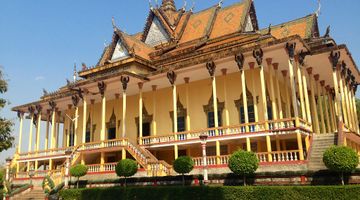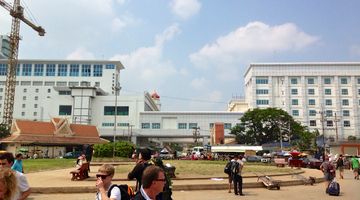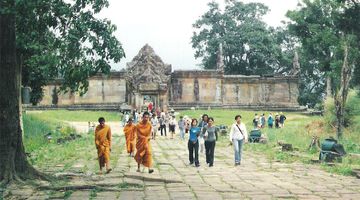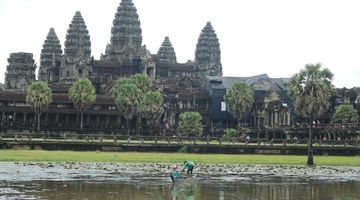Banteay Chhmar Temple - Cambodia Travel Guide
In a nutshell
Believe it or not but there’s one more temple complex in Cambodia of equal dimensions and significance to Angkor. The name for it is Banteay Chhmar. It was built by Jayavarman VII, one of the most eminent sovereigns of the Khmer Empire (he reigned since 1181 up to 1218).
Constructing Banteay Chhmar Jayavarman VII being a quick-witted guy aimed to kill two birds with one stone. First, he secured the empire border with a monumental protective fortress, by the way, the second largest one after Angkor Thom. And his second goal was to eternalize the memory of his son Crown Prince Srindrakumaraputra and four faithful commanders wound up dead struggling with Chams (central and southern Vietnam army).
Jayavarman VII was known also as an innovator, so they say he was one of the first Khmer kings to introduce Buddhism as established religion. Bas-reliefs on the walls, unique architecture, interlacing of household, military and religious folklore let us lift the veil on history and see how fascinating and dramatic early Khmeria was at the time of Hinduism.
Jayavarman VII tolerably saved Hindu heritage adopting it to Buddhism era. Besides already familiar Bayon style faces this temple features absolutely exclusive elements no other temple of the same period can boast of.
The Hall of Kinnars still shows us angelic musicians pictured as creatures with nymph’s bodies and bird’s legs posing like telamons. Most recognizable feature of Banteay Chhmar is obviously a delightful illustration of multi-armed Avalokiteshvara.
The main temple is surrounded by several smaller sanctuaries oriented with respect to four corners of the world. A part of them is quite intact, but others are literally absorbed in jungle what in fact creates mystical view and at the same time lets us feel their victory over time.
At present the temple is under conservation; nothing is being restored or stolen since 20th century and the complex is just about to be in the list of UNESCO World Heritage sites.
Why go
No secret Banteay Chhmar is way more isolated than other most visited complexes, so you are free to feel yourself an Indiana Jones roaming by yourself around the ruins.
We say ruins, indeed ruins!
Unfortunately Banteay Chhmar suffered from damage of the civil war in a greater degree. Its far-off location from e.g. safe Angkor resulting in lack of control made it an easy prey for illegal virtuosity.
Safety
Nowadays the region is safer than it used to be in the past, but the minefields are still being cleaned and the territory is controlled by the Cambodian army. Taking kids there would not be rational. Better safe than sorry.
The above said does not mean you should not go. Follow the designated trails or hire a guide – it is absolutely safe this way.
Getting in and out
If you are an antique-crazy you will definitely enjoy this temple. There it feels like you are lost in time, in the jungle, or deep inside yourself. True temple buffs wouldn’t be scared off by its hard-to-get-to location, or would they?
The easiest way to reach Bantey Chhmar is to get a tour in a more or less touristy city like Phnom Penh, Siem Reap, Battambang or else.
For total spintops this would not work out, cause there’s no passion here, no fire, no point for going nuts. Arranging a journey with timelines, route planning, booking places to stay over, all by yourself is another kind of pleasure; everything is up to you and yet you can make changes whenever you want. So, mostly people come to Sisophon, the capital of Banteay Meanchey province, and then head for Bantey Chhmar by bikes or taxies. We’ve heard of those guys who rented bicycles to ride from Sisophon (USD5-USD15) and even from Battambang!
Now Battambang’s turn. The distance between Battambang and Banteay Chhmar is about 130km, so no need to stay in colourless Sisophon since you can make it within one day from Battambang as well – just get to the bus station and go. Battambang is a big and a really nice city with lots of attractions and accommodation options (from USD10 to USD35 per night).
Accommodation around Banteay Chhmar – CBT group
There are no hotels or guesthouses around the temple but you can stay in one of chaotically scattered villages around Banteay Chhmar. These villages are a part of Community-Based Tourism (CBT) group.
The project was organized to develop tourism in this part of the country. Local government supported by Global Heritage Fund are trying their best to improve economic status of the region, attracting more tourists and therewith sustaining financial condition of natives and temple’s conservation. Their program’s scope includes not only homestays (average USD7) but temple tours, tasting of authentic Khmer food (you’ll be actually able both to taste and learn how to cook what you have just tasted), silk center and rice paddies visiting, fishing, farming, evening entertainment programs with traditional music and karaoke and etc. You will be able to see how Khmers live and what their daily routine is with your own eyes. You will be amazed or it’s better to say freaked out to know people have been living their super-simple life for ages. You can learn more about real Cambodia first-hand, get to know their customs and traditions, their typical everyday life.
Don’t expect much there in the sense of modern conveniences, but they do have everything necessary. The host family will meet you with kindness and will try to make your stay as pleasant as possible. It’s a unique experience you’ll never forget it. All the info regarding homestays can be easily found on the official page of the program in the Internet.
Still thinking how to make the world better? Just go there and remember you are helping to improve both the livelihoods of villagers and temple’s life as well.

